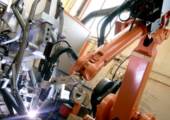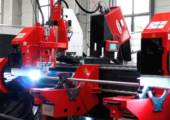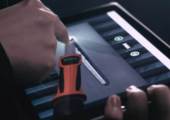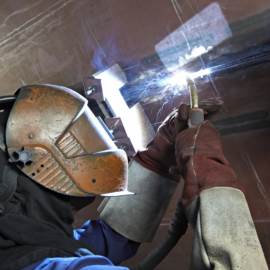-


在线留言
发送您的问题或需求,我们将尽快与您取得联系!
×
-
THE FINE ART OF SHIPBUILDING
ADDING VALUE THROUGH THE RIGHT WELDING TECHNOLOGY
07/27/2020
Ferries, yachts, cargo ships, giant cruise liners: Anything that transports goods or people by sea can be found in the dockyards of shipbuilders such as Blohm&Voss. In addition to the new vessels under construction, the Blohm&Voss yard also provides berths for ships undergoing maintenance and repair work as well as docking facilities for ships where mandatory inspections are required for an operating license to be granted. The average length of stay in the shipyard is one to two weeks. Fronius TransSteel and TPS /i power sources are often used here, with which up to 150 welders can be working on a single ship.

Around 40,000 merchant ships account for roughly 90 percent of the world’s goods traffic; a trend which is on the rise. Experts expect an annual increase of two to three percent by 2020. “German shipyards are full of orders for the coming years,” says Martin Juhn, Key Account Manager at Fronius Germany. Contract security, delivery reliability, and quality play a major role in the popularity of German yards. This is also reflected in the requirements placed on the welding systems used. They have to be easy to operate, designed for two or three shift operation, and robust, as the weather and frequently changing users do not exactly translate into a gentle working environment.
TIME IS MONEY
“The running costs are considerable – high hourly labor rates are a fact of life in the yard,” reports Juhn. The welders are under pressure to quickly weld high-quality seams that require as little reworking as possible and that pass strict quality tests in the form of ultrasound or X-ray tests. This is made even more difficult by different sheet thicknesses, which range from four millimeters, such as on the main deck, to 50 millimeters for structures under particularly high stress, such as machine foundations. One of the challenges here is the introduction of heat, which must be matched to the material thickness in order to avoid stresses, hardness peaks, and cracking. Fortunately, the Fronius TransSteel series comes to the user’s aid with numerous characteristics, such as the “SteelDynamic” for increasing the welding speed and penetration depth.
Heat input is particularly problematic where visually perfect welding results are required. Visible seams may even have to be reworked. For this reason, welders at the Dutch shipyard SLOB in Papendrecht also heat the outer hull at the corresponding points to approximately 400 degrees Celsius when welding reinforcements to the hull and other fixtures on the inside of a ship. The result is a perfect appearance of the ship’s outer hull, without any distortions.
In addition to specialist know-how, having the right technical equipment is also important, especially when alternative materials are on the march in the shipbuilding sector. SLOB increasingly wishes to build even more hulls that are also made from aluminum, which requires a lot of experience. This is because the light metal has a lower melting point and higher thermal conductivity than steel. The thermal expansion is also higher, which can lead to stresses and uncontrolled distortion. The Fronius TPS/i platform can help users here: Thanks to the PMC (Pulse Multi Control) pulse process, the arc remains very stable, resulting in extremely clean weld seams.
The PCS (Pulse Controlled Spray Arc) is another proven process in the shipbuilding industry. It combines the low-spatter pulsed arc directly with the spray arc and thus enables fast work with low levels of distortion. While trialing this process, the experts at SLOB also determined that the weld seam was of perfect quality even without prior face hardening. This saves on the grinding that usually accompanies welding on aluminum ships – a time and cost advantage for every shipyard.
NEW COMPOSITES – NEW WELDING CHALLENGES
“Ship walls must become thinner and thinner the higher up they go, but at the same time, the level of sound insulation must not be allowed to deteriorate,” explains Martin Juhn. Sandwich materials such as Thyssen’s Bondal® naval sheet are used to ensure good sound insulation. This is a composite material with a vibration-damping plastic layer between two steel sheets. The penetration depth is critical when joining the special sheets, which the Fronius TPS/i power source welds using a specially developed characteristic.
Regardless of whether steel, aluminum, or composite materials are being used, the size, weight, individual shape, and specific material behavior during welding prevent a high degree of automation in shipbuilding. The skill of the shipyard worker and the properties of the welding system thus determine the quality of the weld seam.
-


 下载
下载
 会员中心
会员中心



 收起
收起


























